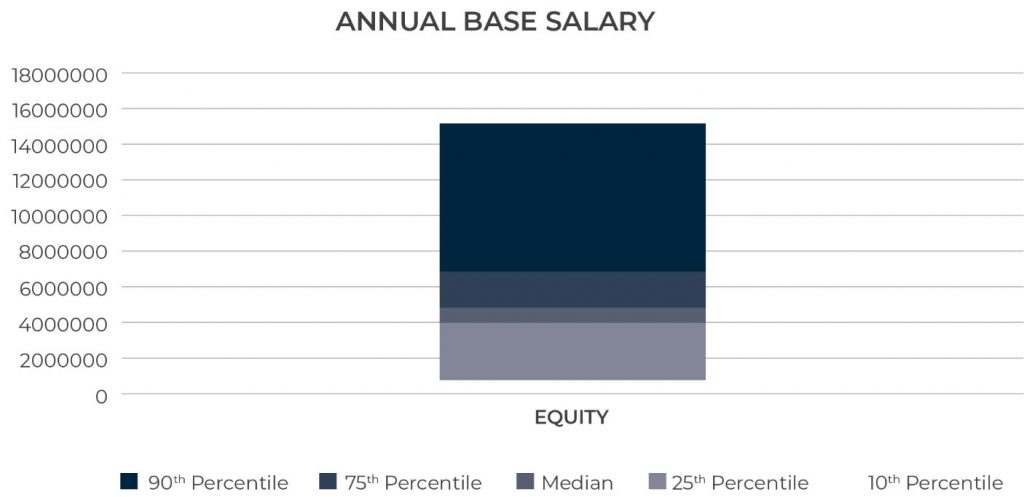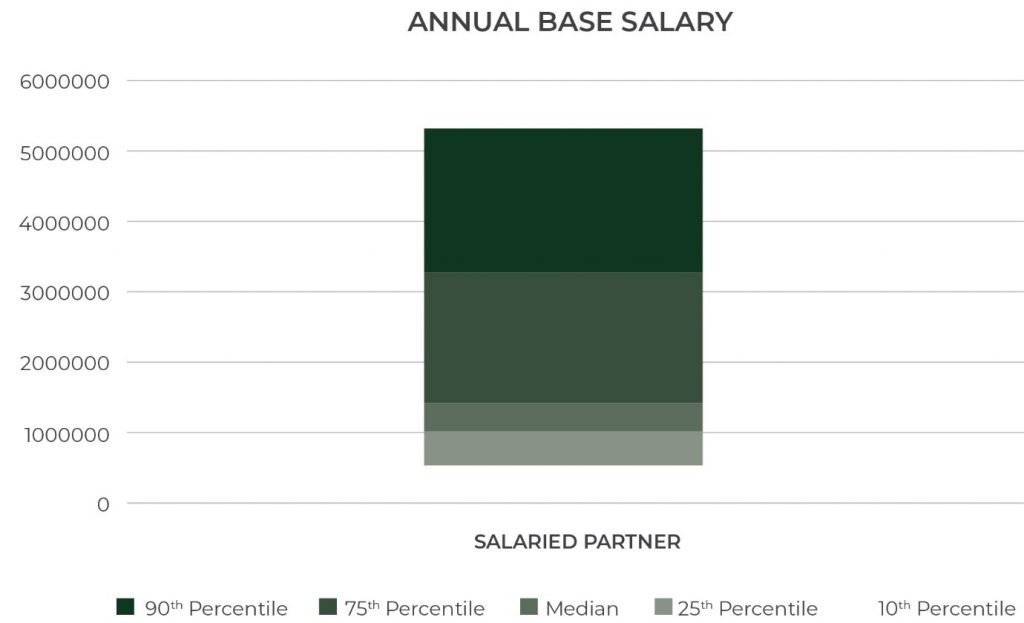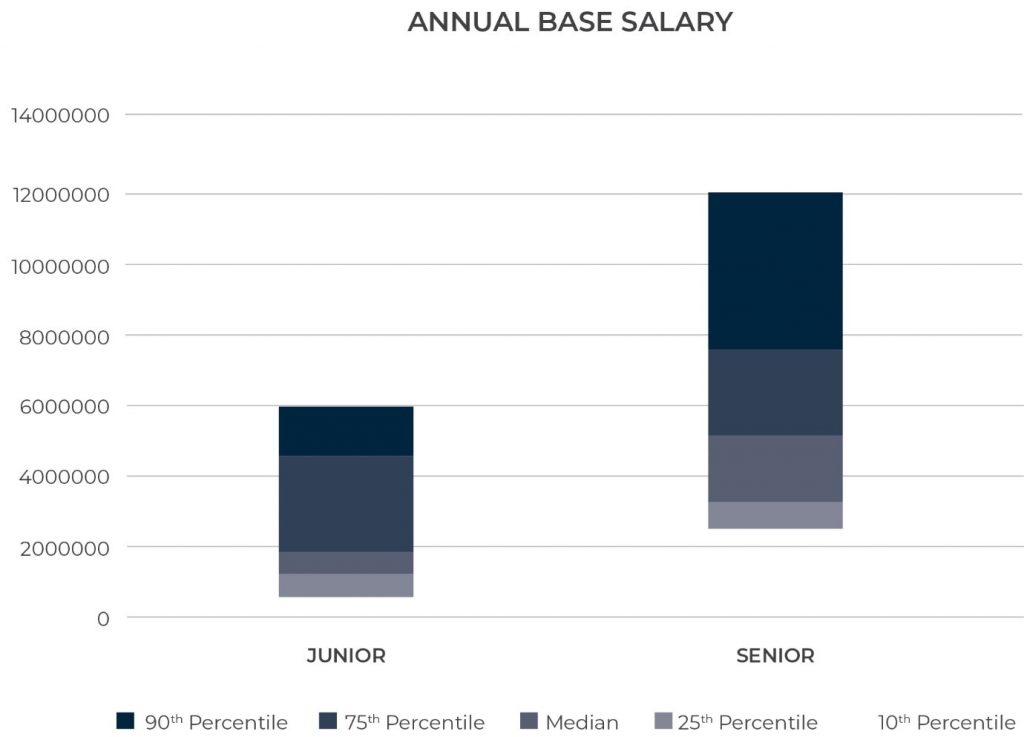South African salary survey – Law firms

28 Oct 2020
Introduction
The biggest question we are currently being asked by law firms across Africa and Asia is what is happening to remuneration in a post- COVID landscape.
There are a host of economic and demand/supply- based factors placing new upward/downward pressures on salaries and remuneration.
Law firms in South Africa, and generally the world at large, have had to be quick in protecting revenue and cash flow during the 2020 year which has largely been filled with unknowns, unpredictability, and unprecedented changes.
This is not to suggest that legal work all but dried up – while some firms were worried about keeping the lights on, others have been inundated with new instructions from clients with collections being the major concern during this time.
There are a host of new employment opportunities for lawyers aside from the typical lockstep – Associate, Senior Associate, Junior Partner, Senior Partner.
The rise of freelancers, consultants, and short-term contracts will continue to force law firms to become increasingly competitive in terms of work life balance, pay, benefits and targets in order to attract and retain top talent.
Law firms who have client diversity (in terms of size, sector, and needs) will be best positioned during the COVID-19 pandemic. While firms who are highly specialized or rely on a small number of clients for the bulk of their work may potentially struggle, particularly if their clients have been hard hit or if the demand for their practice specialisation has drastically diminished.
Ending on a happier note, we still see a splurge of strategic lateral hiring taking place in a plethora of different specialisations. The biggest factor both for prospective employees and employers considering hiring is uncertainty. Legal professionals who can validate their value, and preferably have highly specialized skills or a transferrable book of business, are likely to secure employment even during the pandemic.
While these Partner hires tend to be a bit longer than more Junior placements and appear to take longer than they did historically due to additional scrutiny both on current and predicted book of business.
Law firms that can validate business continuity and stability will be attractive employers during the COVID-19 outbreak. Partners and top-notch Associates are paying additional attention to a potential new firm’s financials and long term plans.
At their current firm they may have very clear visibility of the finances, the strategy and the practices that have been (temporarily or permanently) decimated by COVID-19, those that survived and those that thrived.
Any new firm looking to attract a Partner may be faced with very open and honest questions about the firm’s ongoing performance.
With bricks and mortar becoming less relevant in running a thriving legal practice we are starting to see an uptick in Partners running smaller teams within a larger firm banner. These teams utilise the trust account, branding, and support but remain independent, self-regulated, and rather pay a percentage of billables or a fixed fee to the wider firm.
These teams are being targeted by the firm for revenue but then left to their own devices; small pods where Partners almost create a firm within a firm.
Methodology
Our Research Philosophy & Objective
To follow a rigorous, objective and systematic process to explore the legal landscape of a country and to describe what is happening on the ground in order to facilitate decision making and business development.
Our methodology gives a unique understanding of the market in which our clients operate. Offering detailed and useful information means they can make the right evidence-based business decisions to suit them.
GRM is committed to gathering, analysing and reporting the most accurate information on human capital trends. All gathered information is treated with the strictest confidentiality to ensure that we protect the anonymity of both our candidates and our clients.
All our ongoing and mandated research upholds the principles of scientific knowledge including:
- Systematic observation rather than selective or accidental observations,
- Data is collected in a controlled manner,
- Research that is replicable.
About the data
This report contains compensation and performance data gathered during the past 12 months during our normal course of business, by our Transaction teams and our dedicated Research and Analytics teams, based in South Africa.
This includes data gathered from candidates (job seekers and job applicants) and from clients (job specifications and actual successful placements GRM have made). Data was also collected through our annual private practice salary survey.
The sample included data from more than 450 professionals, in various positions. Having a large number of participants results in a high measure of reliability.
GRM Intelligence also attempts wherever possible to gather wage data by specific salary figures as opposed to ranges which further improves the reliability of our research findings. Where a range of data was given by the participant or client the average of the range of data was calculated and used in the final survey results or otherwise deleted.
Wage data is occupation specific (in this case within the Legal Sector) and is also collected across multiple levels (levels of seniority) and departments thereby ensuring greater accuracy in our findings. Due to the great variance in compensation trends across law firms, GRM Intelligence can also analyse data across law firm type.
GRM Intelligence’s ability to gather data from a wider participation pool minimizes the likelihood of a skewed sample, which can occur when only one type of organization participates in a survey.
For the purposes of this report, we have not differentiated between starting salaries and salaries for individuals who have been working at a particular firm for some time. Typically, we find merit calculations weigh far more heavily on salary increase calculations than years of tenure.
Due to the sample, each year including both new respondents and historical respondents with updated data GRM Intelligence is able to avoid relying on completely new and unique datasets for each year. Comparisons between completely unique samples year-on-year in many instances result in over-reaction to fluctuations or changes in salaries, referred to as sampling error.
GRM Intelligence salary surveys collect and report data from a 12-month time window. This allows us to spot year-to-year market shifts and overall trends in the market. Where data was expired (over 12 months old) our team of Knowledge Consultants updated the data telephonically.
Where data gaps exist, our researchers used cold calling data collection techniques to ensure that respondents from all positions across all requested firms were included in our dataset.
Data analysis
Every reasonable effort was made to maintain data integrity and provide accurate and useful information. Data was analysed by employing univariate descriptive statistics, including mainly cross tabulations, frequencies, frequency distributions, and some averages. To provide deeper insight into the compensation trends a percentile analysis was used over and above the traditional average only analysis.
Percentiles used include; the 10th, 25th, 50th 75th, and 90th percentiles. Please note that in salary data, the median may be lower than the mean due to the fact that there is no upper limit to the rates that can be paid for a job. However, the lower limit is zero. Therefore, the distribution of salaries tends to be skewed with a few salaries at the extreme high end of the range.
Fact: In salary data, the median will almost always be lower than the mean.
How to read our salary percentiles:
Percentile salaries tell us how much a certain percentage of an overall sample in a geographic area or within a given industry or field makes. In other words, percentiles indicate the percentage of people’s salaries that fall below a particular value. Percentiles are useful in understanding salary ranges in that they tell one where a salary stands relative to other salaries.
The most commonly-used percentile salaries are the 10th, 25th, 50th, 75th and 90th. These are the percentiles included in this report.
10th Percentile = earn more than 10% of people and less than the other 90%
25th Percentile = earn more than 25% of people and less than the other 75%
50th Percentile/median = earn more than 50% and less than the other 50%
75th Percentile = earn more than 75% of people and less than the other 25%
90th Percentile = earn more than 90% of people and less than the other 10%
For example, in the picture below if you earned a salary of R100,000 per month and everyone to the left earned less than you, and everyone to the right earned more than you. We might want to understand what percentile your salary was.
In this example, you earn more than 80% of the sample and less than 20% of the sample and therefore your salary would be at the 80th percentile.
How to read a floating percentile graph:
This salary survey provides a snapshot of the market situation at a set time, allowing the user a guide from which to work. Salaries do however move at varying rates throughout the year due to staff turnover, supply of and demand for skilled and unskilled workers, social pressures, and inflation. Consequently, the analysis and benchmarking component of this report will add additional insight into the longer-term trends prevailing in the legal sector.
Remuneration strategy
Performance & Compensation strategy trends
There appears to be a mixed bag of approaches being adopted by law firms in Africa with respect to remuneration and promotions during the 2020 year.
Furthermore, many firms were forced to make interim and urgent remuneration and headcount choices given the COVID-19 outbreak.
We have seen a host of preemptive measures to protect law firm cash flow which have impacted upon salaries in an unusual way.
Static remuneration policies with heavy base salaries and small commission components have been shown up. Remuneration strategies that are more performance-based and are aligned to output have outshone in 2020.
As we move into a post-COVID space we are more likely than ever before to see a rapid move away from antiquated salary brackets to embrace a more holistic merit-based compensation model based on billings, tech use, training, and brand ambassadors etc.
Salary cuts have been noted across Africa. Of the law firms implementing pay cuts we find most firms are opting for around 5%-10%, however, some firms have been noted to implement up to 30-50% cuts.
There have been instances where these cuts have been labelled temporary as opposed to permanent.
War for talent
We have seen younger lawyers being expected to step up and get more involved in client generation. Increasingly, this being incorporated into performance indicators.
Lawyers that are high earners or bring a large book of clients to the table need to be protected from salary drops and delayed promotions during this period.
There has been a huge movement of top lawyers (senior and junior) taking their clients and leaving to other firms or even setting up on their own due to pay cuts, refinancing, or increased targets despite being a top biller.
The war for top talent is about to get more severe as we saw in 2009 as lawyers who struggle to meet targets or build a book of business are likely to leave traditional private practice and potentially even the law.
Most law firms appear to be contending with headcount considerations. With deal flow and types of deals becoming difficult to predict the required headcount and whether (and if so which) staff should be retrenched is a difficult and pertinent challenge.
On the one hand retrenchments may result in heightened anxiety around firm and job continuity amongst remaining staff, on the other hand it is a risk to carry staff who are not covering their cost during this time.
Remuneration findings
Equity Partner
| Equity Partner | |
| 10th percentile | R1,005,000 |
| 25th percentile | R4,190,050 |
| Median | R4,955,630 |
| 75th percentile | R6,925,450 |
| 90th percentile | R15,400,000 |
Salaried Partner
| Partner | |
| 10th percentile | R540,000 |
| 25th percentile | R1,080,000 |
| Median | R1,440,000 |
| 75th percentile | R3,299,800 |
| 90th percentile | R5,355,400 |
Associates
| Junior | Senior | |
| 10th percentile | R54,000 | R270,600 |
| 25th percentile | R123,000 | R350,808 |
| Median | R198,000 | R565,800 |
| 75th percentile | R493,250 | R831,000 |
| 90th percentile | R650,200 | R1,327,200 |
Partner focus
Whenever GRM publishes Partner salary findings, we sometimes find that Partners of smaller law firms feel the numbers are far too high. And sometimes when we chat to the Big 5, fully integrated international law firms, and successful corporate boutique firms they believe the numbers are too small.
This highlights the most consistent finding pertaining to Partners (salaried or equity) – the disparity between different law firms’ Partners is massive. We see some firms offering very low and sometimes zero-salary to Partners, whereby compensation is driven entirely by performance.
We also see some firms offering a higher base salary to their staff where targets are hit and lower salaries if individuals fall short of targets. There are some people earning more, and there are some people earning less.
These findings pertain to the hundreds of salaries we do have; however, we have not spoken to every person in the country.
The best illustration of this is that we have moved Partners at some firms into Associate positions (i.e. a demotion) but yet they earn a higher salary.
Reductions in Partner distributions have been common (between 10-50% range with the average around 30%). Oftentimes there are differing reductions for equity and non-equity Partners and in some cases, Partners have had to recapitalise during 2020.
We will likely see that the law firms that allow Partners to carry the brunt of the financial burden as opposed to the more junior attorneys and support staff will be able to foster a positive culture within their firms and will have an easier time attracting talent when they need to in the future.
We see increasing pressure on Partner billings. Partners need to be bringing in clients regularly, collecting what they bill, and that remuneration should accurately reflect what they are actually bringing into the firm.
This more performance focused remuneration tends to be very popular in small to medium sized firms and corporate boutique firms. The larger firms tend to be more static and rigid in their remuneration structures for Partners with some Partners having higher costs than billings but bring ancillary benefits to the firm such as employment equity points or scarce skills.
Extra scrutiny on every Partner’s personal billings and collections and their “take home” will be reflected in what they are actually, monetarily, bringing to the firm and a gradual move away from guarantees and lockstep models, firstly in-house and especially when hiring additional Partners.
Summary of key points
We will, in all likelihood, continue to see law firms reducing salaries in order to maintain liquidity. Bonuses and perks will likely be reduced as firms seek to then cut costs. After the pandemic has been contained and economic activity begins to resume deal flow will skyrocket. Lawyers can expect salaries to rise and commissions will be high given the sheer volume of work.
Well capitalised firms have been able to hold back on pay cuts but many have opted to delay promotions and salary reviews. Several law firms we spoke to advised that they did not pay bonuses at the financial year-end (for those who pay bonuses in Feb/March).
But this is not true for all firms with some going ahead with bonus payouts, salary increases and promotions. In some instances, we note promotions without any pay rise.
We have spoken to numerous Partners who advised that disbursements have been cut and, in some cases, even cancelled to Partners to protect cash flow during this time.
Other firms have opted to protect Partner remuneration and rather cut Associate and support staff salaries. Other firms have gone for a mixed approach and cut salaries across the board as well as reduced or put a hold on Partner disbursements.
There are a host of new employment opportunities for lawyers aside from the typical lockstep – Associate, Senior Associate, Junior Partner, Senior Partner.
See also:
- Salary survey – Partner focus 2017/2018
- R300 million finance available for SA law firms
- Free access to legal resources for small law firms
- Litigation funding in Africa – Opportunities in this investment vehicle in 2020 and beyond
- The business of law – Securing a steady source of working capital
- Why every law firm needs an office in South Africa right now!
- Fake qualifications can lead to large claims for damages






